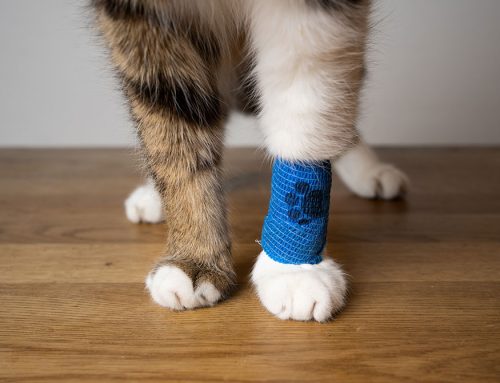Greendale Village Vet is proud to offer Class IV Laser Therapy as a complementary treatment option for your pet. Laser therapy is performed as a post-operative treatment following most routine and orthopedic surgeries to speed healing and return to normal function. There are many additional applications for this type of therapy.
What Is Photomedicine?
Photomedicine is the use of light to repair tissue, relieve inflammation, reduce pain, and improve circulation and the function of nerves and muscles. A photochemical effect occurs in the tissues comparable to photosynthesis in plants in that light is absorbed and exerts a chemical change in the cells it is applied to.
The response in the cells is called photo-bio-modulation.
How Does Laser Therapy Work?
Laser therapy provides photostimulation to the mitochondria of cells. Mitochondria are considered the power plant of cells where energy is made. Through these effects, laser light has been shown to enhance proliferation of connective tissue cells, skin cells, cells lining blood vessels, and white blood cells. In addition to helping these cells regenerate, laser light also helps these cells to migrate to where the healing is needed and helps prevent cell death after damage occurs. Laser light also dilates blood vessels to improve blood flow where it is applied. These changes on the cellular level translate to improving oxygen delivery, enhancing collagen synthesis, promoting wound healing, and healing deeper structures like nerves, tendons, cartilage, bone, and even internal organs.

What Illnesses Can Laser Therapy Be Used For?
- Skin and deep tissue wounds
- Skin irritation from allergies
- Lutherville-Timonium
- Tissue infections by way of antibacterial effects
- Post-surgical pain relief and stimulation of healing
- Joint sprains, muscle strains, and bone fractures
- Nerve regeneration and prevention of scar formation after spinal cord injury or stroke
- Chronic joint arthritis
- Organ inflammation like urinary bladder irritation and irritable bowel disease
- Gingivitis and periodontal disease
- Chronic ear canal changes from long standing ear infections and allergies
What Is a Treatment Like?
Laser light is delivered through a non-invasive hand piece to treat the affected area. Your pet may feel a gentle warming sensation. The treatment itself may take two to eight minutes per site depending upon the condition being treated. In some cases, the doctor may recommend treating multiple sites or may advise combining laser therapy with other modalities like acupuncture.
How Many Treatments Will My Pet Need?
The number of treatments depends upon the condition being treated. For chronic conditions like arthritis, an initial course of six treatments over a span of two to three weeks is recommended. After that the treatments are done as needed, which may be once a month. For an acute illness such as a wound or an irritable bladder, treatments may be once to twice weekly until the tissue is healed. The doctor will discuss the expected protocol based on your pet=s condition and response to treatment.







Leave A Comment